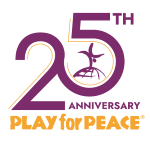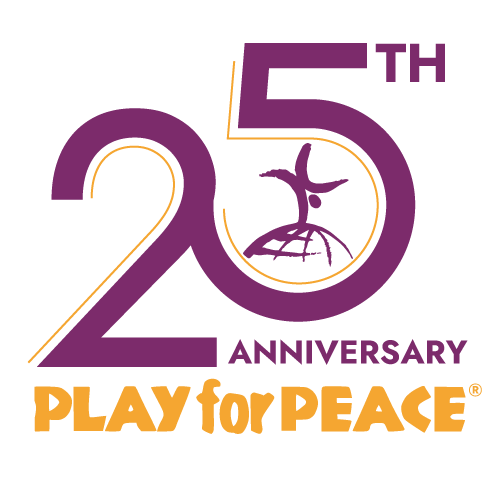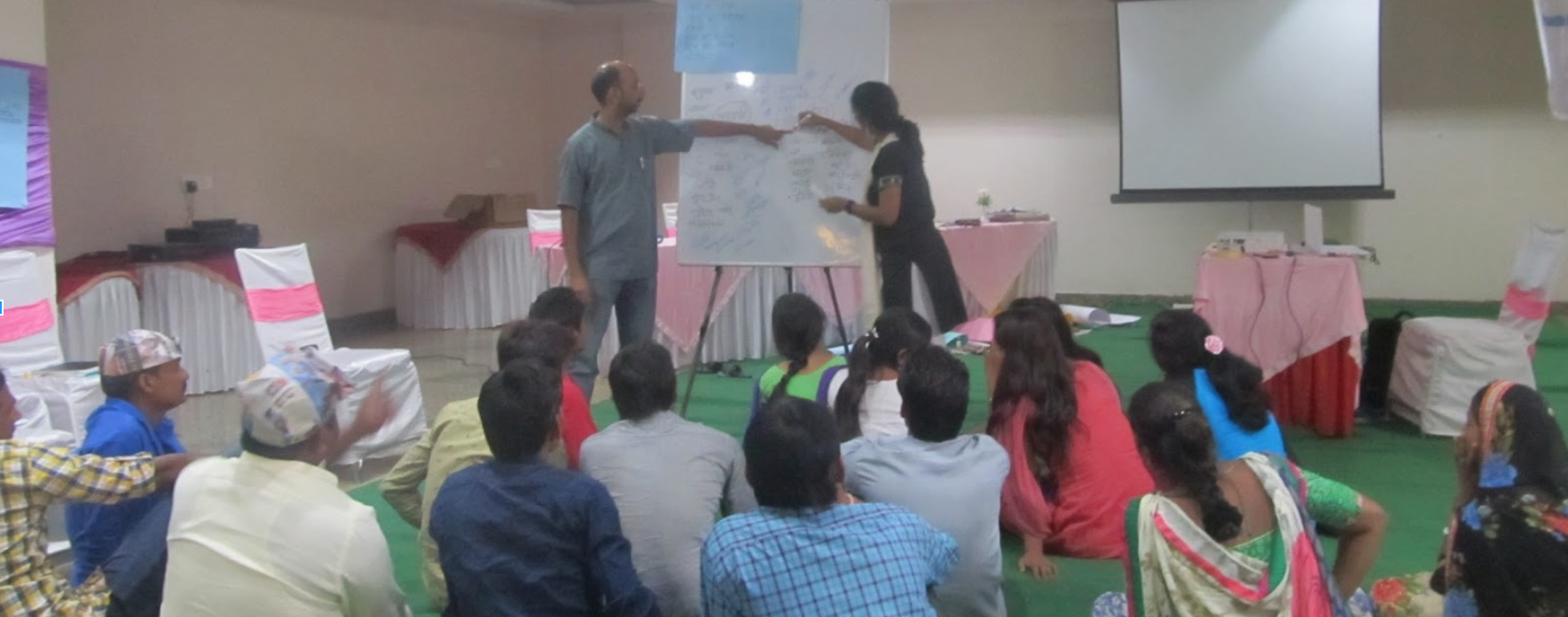“ I liked everything [about this session]: the caring and togetherness... the most important thing is that no one loses.”
Swati and Agyat are two of our wonderful trainers. Based in Pune, India, they travel to teach the magic of play. From July 7 - 9, they worked, along with Ajat and Abha, with a diverse group of staff and trainees in Jaipur. Together they shared a motivating three days, exploring the core values of Play For Peace, and encouraging their group to examine difficult topics such as risk, patriarchy and inequality. Below is a journal of those three days... DAY 1 The age of our participants ranged from 20-40 years old. When you have such a diverse group, the best thing to do is fall back on the old adage: “trust the process”. We did just that and started with a practice peace session. After 70 minutes, we asked participants to reflect on their experience. One student asked about our objective for doing the session and we responded by sharing the core values of Play for Peace. We were thrilled when all participants agreed that their experience reflected these values.
From this point on, whenever they asked about objective, we did not immediately answer the question, but instead asked what they thought first. Most of the time, participants were able to identify relevant objectives. Before lunch, we shared the concept of 'Challenge by Choice' in order to talk about the relationship between risk & growth. We explored the ideas of 'Comfort Zones', 'Growth Zones', and 'Panic Zones', based on how much risk we choose to take and how it affects our growth. We then did a series of activities to help connect with each other at a deeper level. We first started with 'line ups', where participants arranged themselves in ascending order based on different attributes that we specified.
In order to further challenge the participants, we then arranged them in small groups to have a dialogue about themselves and discover shared qualities. Participants shared that it was valuable to get to know each other better. This, they agreed, would help them to connect better in the future. Now it was time for Origami! Before closing the day, we demonstrated how to make a sun-cap using old newspapers. When we started, they had no idea what the product would be. Most of them were excited when they saw what they had made. Later on, they wrote messages related to child welfare on their caps. Before closing we asked them to share one or two things that they found valuable. The responses were fantastic: “ I liked everything: the caring and togetherness... the most important thing is that no one loses.”
“I experienced involvement and inclusion for everyone. Even the leaders participated.”
DAY 2 We started the day by reviewing games. We now encouraged participants to take the initiative in leading these games, and several were willing to try. We also played a 23 minute video called “khel se mel”, which shows how Play for Peace is being used in communities. The reaction was great! The film seemed to offer them a window of possibility for how to deal with discrimination and trauma.
“Play for Peace is reaching the most marginalized people.” “The best thing is that it addresses discrimination, and encourages physical and mental growth.”
After lunch we did an activity about gender, starting with a word web of 'Admi' (man) and 'Aurat' (women). Some of the female participants pointed out that most of the word associations for 'Aurat' are negative. In general, a lot of reactions were generated and all the participants had something to say. We then introduced the word “pitrsatta” (patriarchy) and talked about systems of power. Moving the discussion forward, we formed small groups and provided newspapers. We asked the groups to make a newspaper of “Patriarchy & Change”, cutting out headlines and pictures, and pasting these on two halves of chart paper marked “pitrasatta” and “badlav” (change).
Once they completed their newspaper, groups exchanged views about why they selected their items. Before ending the day we formed two groups. This was for a mock session. We asked each member to choose a game they would like to lead in the morning. When asked to share their thoughts about the day, many positive words were used: change, power and equality, to name a few. DAY 3 Beginning in the small groups we had made at the end of Day 2, we provided input on how to conduct their mock sessions. We discussed how to sequence activities and provided some tips on how to conduct effective sessions, sharing points about sticking to time limits and ensuring that all are included. After we asked them to discuss the difference between participating in games versus leading the activities.
Some focussed on the expectations of leadership: “it is a lot of responsibility” or “there was some fear.” Others focussed on the joy that the role brought: “we got in touch with our potential” and “it will be a lot of fun when we do it with children.” Finally we came to the action plan: building a schedule for the next three months in order to help participants incorporate Play for Peace into their lives. We provided a format to plan weekly sessions, and guided them in this process. In the end, we sang a song about change and the need to take a stand. We asked for final comments, and the participants who spoke talked about how unique their experience was, mentioning that it took them back to their childhood. We can’t wait to see how they react to Module 2, which will further help them embrace Play for Peace!
[gallery ids="2816,2817,2819"]



